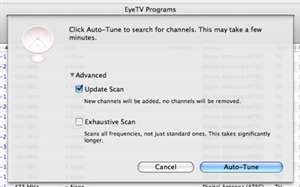

As of 2015, smart TVs are the only type of middle to high-end television being produced. Smart TVs took over the television market after 2010 and continue to partner with new providers to bring streaming video to even more users. These digital media players have continued to be updated and new generations released. Digital media players also began to become available to the public during this time.
Eyetv hd xbox tv#
The first generation Apple TV was released in 2007 and in 2008 the first generation Roku streaming device was announced. In 2008 Hulu, owned by NBC and Fox, was launched, followed by tv.com in 2009, owned by CBS. Netflix, a website originally created for DVD rentals and sales, began providing streaming content in 2007. Amazon Video began in the United States as Amazon Unbox in 2006, but did not launch worldwide until 2016. A few years later, television networks and other independent services began creating sites where shows and programs could be streamed online.
Eyetv hd xbox series#
Īpple's iTunes service also began offering select television programs and series in 2005, available for download after direct payment. Karim could not easily find video clips of either event online, which led to the idea of a video sharing site. YouTube co-founder Jawed Karim said the inspiration for YouTube first came from Janet Jackson's role in the 2004 Super Bowl incident, when her breast was exposed during her performance, and later from the 2004 Indian Ocean tsunami. The video-sharing site YouTube was launched in early 2005, allowing users to share illegally posted television programs. The mid-2000s were the beginning of television programs becoming available via the Internet. The combination of DCT and ADSL technologies made it possible to practically implement streaming services at around 2 Mbit/s bandwidth. ADSL increased the bandwidth of a telephone line from around 100 kbit/s to 2 Mbit/s, while DCT compression reduced the required bandwidth of a digital television signal from around 200 Mbit/s down to about 2 Mbit/s. Motion-compensated DCT video compression significantly reduced the amount of bandwidth required for a television signal, while at the same time ADSL increased the bandwidth of data that could be sent over a copper telephone wire.

DCT is a lossy compression technique that was first proposed by Nasir Ahmed in 1972, and was later adapted into a motion-compensated DCT algorithm for video coding standards such as the H.26x formats from 1988 onwards and the MPEG formats from 1991 onwards.

Streaming services were only made possible as a result of two major technological developments: discrete cosine transform (DCT) video compression and asymmetric digital subscriber line (ADSL) data transmission. Up until the 1990s, it was not thought possible that a television programme could be squeezed into the limited telecommunication bandwidth of a copper telephone cable to provide a streaming service of acceptable quality, as the required bandwidth of a digital television signal was around 200 Mbit/s, which was 2,000 times greater than the bandwidth of a speech signal over a copper telephone wire. 8 Overview of platforms and availability.


 0 kommentar(er)
0 kommentar(er)
